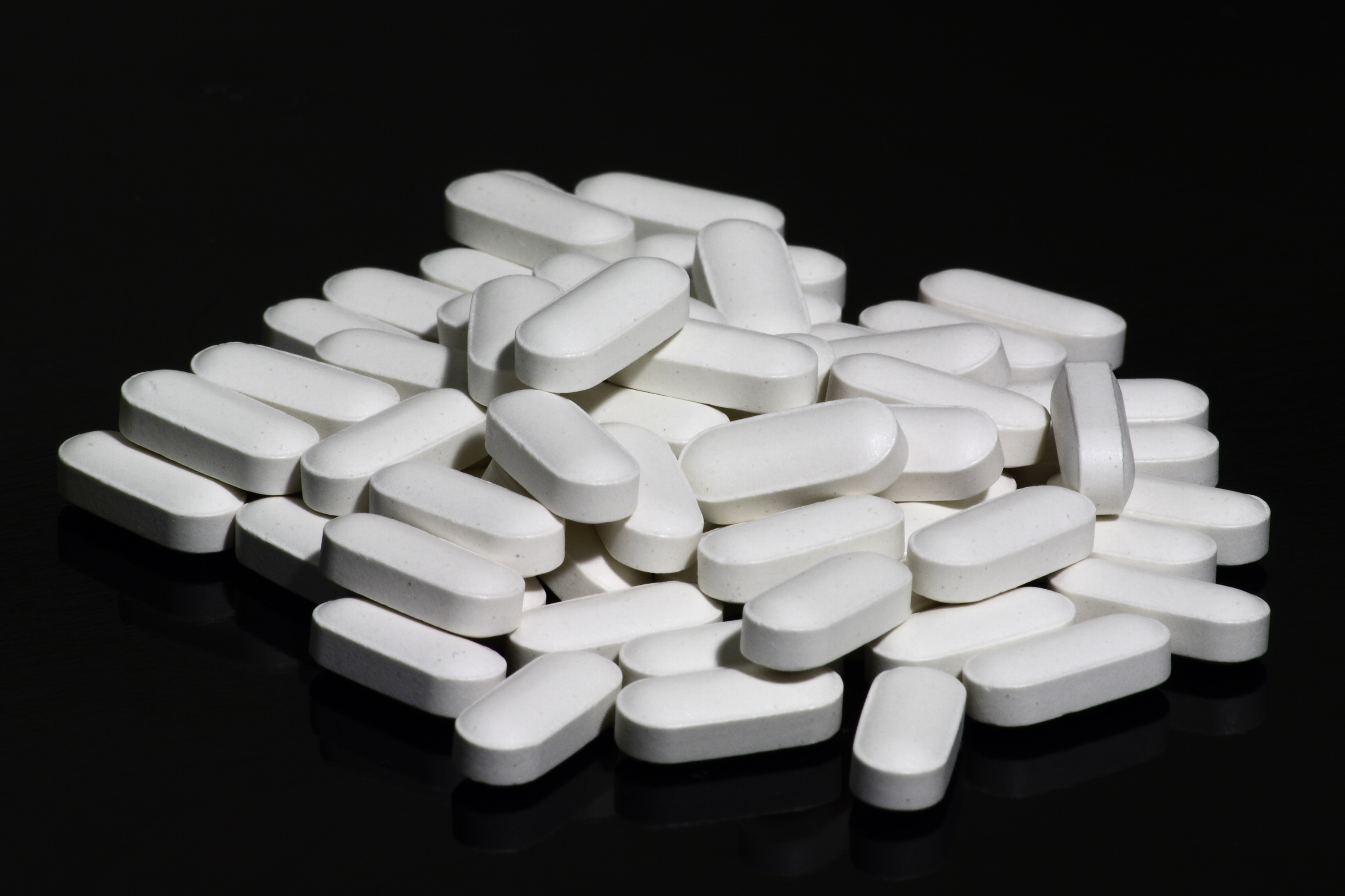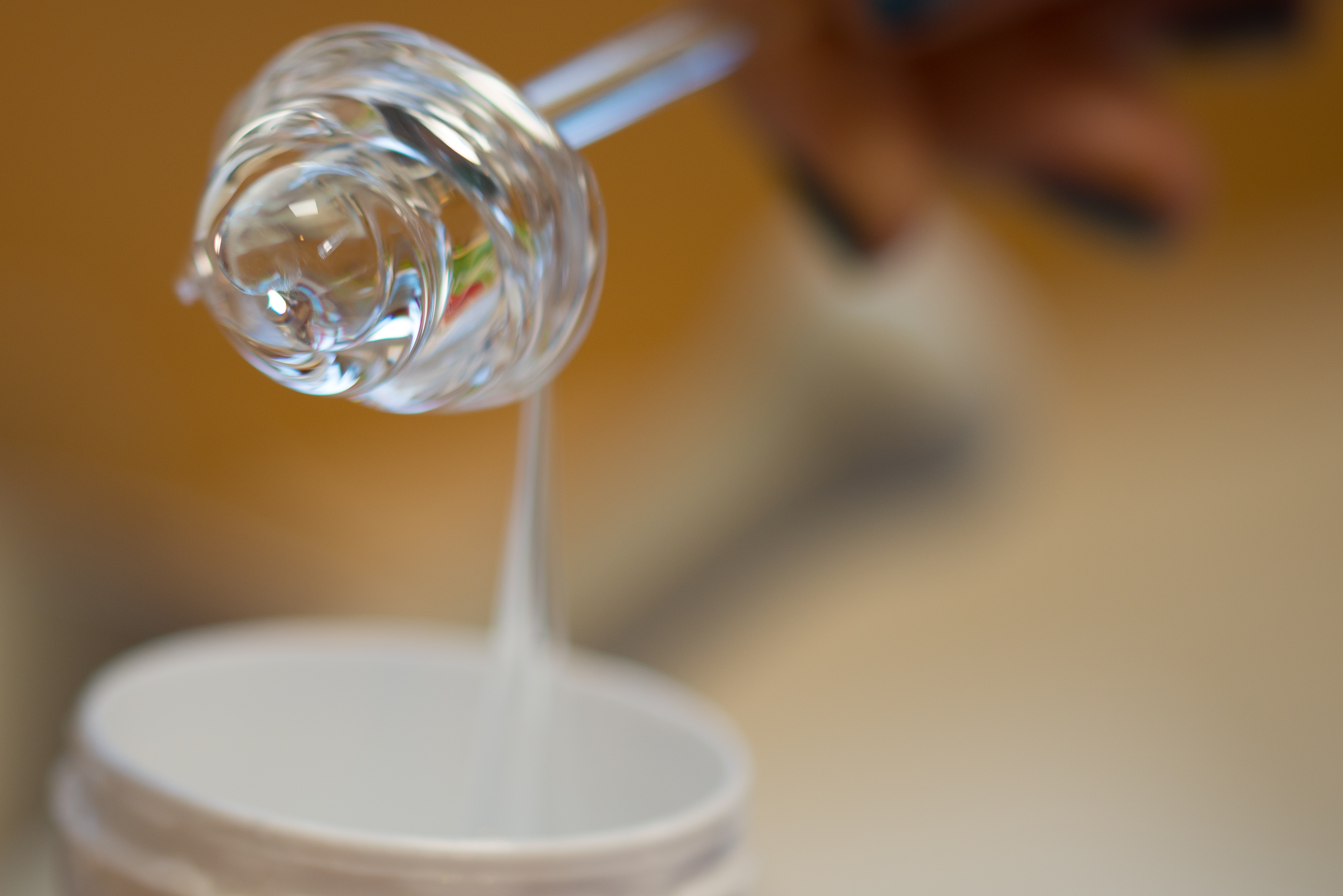|
Provitamin
A provitamin is a substance that may be converted within the body to a vitamin. The term previtamin is a synonym. The term "provitamin" is used when it is desirable to label a substance with little or no vitamin activity, but which can be converted to an active form by normal metabolic processes. Example Some provitamins are: * "Provitamin A" is a name for β-carotene, which has only about 1/6 the biological activity of retinol (vitamin A); the body uses an enzyme to convert β-carotene to retinol. In other contexts, both β-carotene and retinol are simply considered to be different forms ( vitamers) of vitamin A. * "Provitamin B5" is a name for panthenol, which may be converted in the body to vitamin B5 (pantothenic acid). * Menadione is a synthetic provitamin of vitamin K. * Provitamin D2 is ergosterol Ergosterol (ergosta-5,7,22-trien-3β-ol) is a mycosterol found in cell membranes of fungi and protozoa, serving many of the same functions that cholesterol serves in animal ... [...More Info...] [...Related Items...] OR: [Wikipedia] [Google] [Baidu] |
Vitamin A
Vitamin A is a fat-soluble vitamin that is an essential nutrient. The term "vitamin A" encompasses a group of chemically related organic compounds that includes retinol, retinyl esters, and several provitamin (precursor) carotenoids, most notably Β-Carotene, β-carotene (''beta''-carotene). Vitamin A has multiple functions: growth during embryo development, maintaining the immune system, and healthy vision. For aiding vision specifically, it combines with the protein opsin to form rhodopsin, the light-absorbing molecule necessary for both low-light (scotopic vision) and color vision. Vitamin A occurs as two principal forms in foods: A) retinoids, found in Animal source foods, animal-sourced foods, either as retinol or bound to a fatty acid to become a retinyl ester, and B) the carotenoids Α-Carotene, α-carotene (''alpha''-carotene), β-carotene, Γ-Carotene, γ-carotene (''gamma''-carotene), and the xanthophyll beta-cryptoxanthin (all of which contain β-ionone rings) that ... [...More Info...] [...Related Items...] OR: [Wikipedia] [Google] [Baidu] |
Vitamin
Vitamins are Organic compound, organic molecules (or a set of closely related molecules called vitamer, vitamers) that are essential to an organism in small quantities for proper metabolism, metabolic function. Nutrient#Essential nutrients, Essential nutrients cannot be biosynthesis, synthesized in the organism in sufficient quantities for survival, and therefore must be obtained through the Diet (nutrition), diet. For example, vitamin C can be synthesized by some species but not by others; it is not considered a vitamin in the first instance but is in the second. Most vitamins are not single molecules, but groups of related molecules called vitamers. For example, there are eight vitamers of vitamin E: four tocopherols and four tocotrienols. The term ''vitamin'' does not include the three other groups of essential nutrients: mineral (nutrient), minerals, essential fatty acids, and essential amino acids. Major health organizations list thirteen vitamins: * Vitamin A (all-' ... [...More Info...] [...Related Items...] OR: [Wikipedia] [Google] [Baidu] |
Vitamer
A vitamer () is any of the related forms in which some vitamin occurs. Each vitamer of a particular vitamin is a compound that performs the functions of that vitamin and prevents the symptoms of deficiency of the vitamin. Early research identified vitamins by their ability to cure vitamin-specific deficiency diseases. For example, vitamin B1 was first identified as a substance that prevented and treated beriberi. Subsequent nutrition research has revealed that all vitamers exhibit biological activity against their specific vitamin deficiency, although different vitamers exhibit different potencies against those diseases. A set of vitamers with related biological activity are grouped together by a general name, or ''generic descriptor'', that refers to similar compounds with the same vitamin function. For example, ''vitamin A'' is the generic descriptor for the class of vitamin A vitamers which include retinol, retinal, retinoic acid, and provitamin carotenoids such as beta-caro ... [...More Info...] [...Related Items...] OR: [Wikipedia] [Google] [Baidu] |
Ergosterol
Ergosterol (ergosta-5,7,22-trien-3β-ol) is a mycosterol found in cell membranes of fungi and protozoa, serving many of the same functions that cholesterol serves in animal cells. Because many fungi and protozoa cannot survive without ergosterol, the enzymes that synthesize it have become important targets for drug discovery. In human nutrition, ergosterol is a provitamin form of vitamin D2; exposure to ultraviolet (UV) light causes a chemical reaction that produces vitamin D2. Role in fungi Ergosterol (ergosta-5,7,22-trien-3β-ol) is a sterol found in fungi, and named after ergot, the common name of members of the fungal genus '' Claviceps'' from which ergosterol was first isolated. Ergosterol is a component of yeast and other fungal cell membranes, serving many of the same functions that cholesterol serves in animal cells. Its specificity in higher fungi is thought to be related to the climatic instabilities (highly varying humidity and moisture conditions) encountered by ... [...More Info...] [...Related Items...] OR: [Wikipedia] [Google] [Baidu] |
Retinol
Retinol, also called vitamin A1, is a fat-soluble vitamin in the vitamin A family that is found in food and used as a dietary supplement. Retinol or other forms of vitamin A are needed for vision, cellular development, maintenance of skin and mucous membranes, immune function and reproductive development. Dietary sources include fish, dairy products, and meat. As a supplement it is used to treat and prevent vitamin A deficiency, especially that which results in xerophthalmia. It is taken by mouth or by intramuscular injection, injection into a muscle. As an ingredient in skin-care products, it is used to reduce wrinkles and other effects of skin aging. Retinol at normal doses is well tolerated. High doses may cause hepatomegaly, enlargement of the liver, dry skin, and hypervitaminosis A. High doses during pregnancy may harm the fetus. The body converts retinol to retinal and retinoic acid, through which it acts. Retinol was discovered in 1909, isolated in 1931, and first m ... [...More Info...] [...Related Items...] OR: [Wikipedia] [Google] [Baidu] |
Panthenol
Panthenol (also called pantothenol) is the alcohol analog of pantothenic acid (vitamin B5), and is thus a provitamin of B5. In organisms, it is quickly oxidized to pantothenic acid. It is a viscous transparent liquid at room temperature. Panthenol is used in pharmaceutical and children's products as a moisturizer and to hasten wound healing. Adverse effects Panthenol is generally well tolerated. In rare cases, skin irritation and contact allergies have been reported. Pharmacology Panthenol readily penetrates into the skin and mucous membranes (including the intestinal mucosa), where it is quickly oxidized to pantothenic acid. Pantothenic acid is extremely hygroscopic. It is also used in the biosynthesis of coenzyme A, which plays a role in a wide range of enzymatic reactions and in cell growth. Physical and chemical properties Panthenol is an odourless, slightly bitter, highly viscous, transparent, and colourless liquid at room temperature, but salts of pantothenic aci ... [...More Info...] [...Related Items...] OR: [Wikipedia] [Google] [Baidu] |
Menadione
Menadione is a natural organic compound with the formula C6H4(CO)2C2H(CH3). It is an analog of 1,4-naphthoquinone with a methyl group in the 2-position. It is sometimes called vitamin K3. Use is allowed as a nutritional supplement in animal feed because of its vitamin K activity. Biochemistry Menadione is converted to vitamin K2 (specifically, MK-4) by the prenyltransferase action of vertebrate UBIAD1. This reaction requires the hydroquinone (reduced) form of K3, menadiol, produced by NQO1. Menadione is also a circulating form of vitamin K, produced in small amounts (1–5%) after intestinal absorption of K1 and K2. This circulation explains the uneven tissue distribution of MK-4, especially since menadione can penetrate the blood–brain barrier. The cleavage enzyme is yet to be identified. As K3 is known to be toxic in large amounts, researchers speculate that the cleavage process is closely regulated. Terminology The compound is variously known as vitamin K3 an ... [...More Info...] [...Related Items...] OR: [Wikipedia] [Google] [Baidu] |
Metabolism
Metabolism (, from ''metabolē'', "change") is the set of life-sustaining chemical reactions in organisms. The three main functions of metabolism are: the conversion of the energy in food to energy available to run cellular processes; the conversion of food to building blocks of proteins, lipids, nucleic acids, and some carbohydrates; and the elimination of metabolic wastes. These enzyme-catalyzed reactions allow organisms to grow and reproduce, maintain their Structures#Biological, structures, and respond to their environments. The word ''metabolism'' can also refer to the sum of all chemical reactions that occur in living organisms, including digestion and the transportation of substances into and between different cells, in which case the above described set of reactions within the cells is called intermediary (or intermediate) metabolism. Metabolic reactions may be categorized as ''catabolic''—the ''breaking down'' of compounds (for example, of glucose to pyruvate by c ... [...More Info...] [...Related Items...] OR: [Wikipedia] [Google] [Baidu] |
Biological Activity
In pharmacology, biological activity or pharmacological activity describes the beneficial or adverse effects of a drug on living matter. When a drug is a complex chemical mixture, this activity is exerted by the substance's active ingredient or pharmacophore but can be modified by the other constituents. Among the various properties of chemical compounds, pharmacological/biological activity plays a crucial role since it suggests uses of the compounds in the medical applications. However, chemical compounds may show some adverse and toxic effects which may prevent their use in medical practice. Biological activity is usually measured by a bioassay and the activity is generally dosage-dependent, which is investigated via dose-response curves. Further, it is common to have effects ranging from beneficial to adverse for one substance when going from low to high doses. Activity depends critically on fulfillment of the ADME criteria. To be an effective drug, a compound not only ... [...More Info...] [...Related Items...] OR: [Wikipedia] [Google] [Baidu] |
Enzyme
An enzyme () is a protein that acts as a biological catalyst by accelerating chemical reactions. The molecules upon which enzymes may act are called substrate (chemistry), substrates, and the enzyme converts the substrates into different molecules known as product (chemistry), products. Almost all metabolism, metabolic processes in the cell (biology), cell need enzyme catalysis in order to occur at rates fast enough to sustain life. Metabolic pathways depend upon enzymes to catalyze individual steps. The study of enzymes is called ''enzymology'' and the field of pseudoenzyme, pseudoenzyme analysis recognizes that during evolution, some enzymes have lost the ability to carry out biological catalysis, which is often reflected in their amino acid sequences and unusual 'pseudocatalytic' properties. Enzymes are known to catalyze more than 5,000 biochemical reaction types. Other biocatalysts include Ribozyme, catalytic RNA molecules, also called ribozymes. They are sometimes descr ... [...More Info...] [...Related Items...] OR: [Wikipedia] [Google] [Baidu] |
Pantothenic Acid
Pantothenic acid (vitamin B5) is a B vitamin and an essential nutrient. All animals need pantothenic acid in order to synthesize coenzyme A (CoA), which is essential for cellular energy production and for the synthesis and degradation of proteins, carbohydrates, and fats. Pantothenic acid is the combination of pantoic acid and beta-Alanine, β-alanine. Its name comes from the Greek language, Greek ''pantothen'', meaning "from everywhere", because pantothenic acid, at least in small amounts, is in almost all foods. Deficiency of pantothenic acid is very rare in humans. In dietary supplements and animal feed, the form commonly used is calcium pantothenate, because chemically it is more stable, and hence makes for longer product shelf-life, than sodium pantothenate and free pantothenic acid. Definition Pantothenic acid is a water-soluble vitamin, one of the B vitamins. It is synthesized from the amino acid β-alanine and pantoic acid (see #Biosynthesis, biosynthesis and structu ... [...More Info...] [...Related Items...] OR: [Wikipedia] [Google] [Baidu] |



